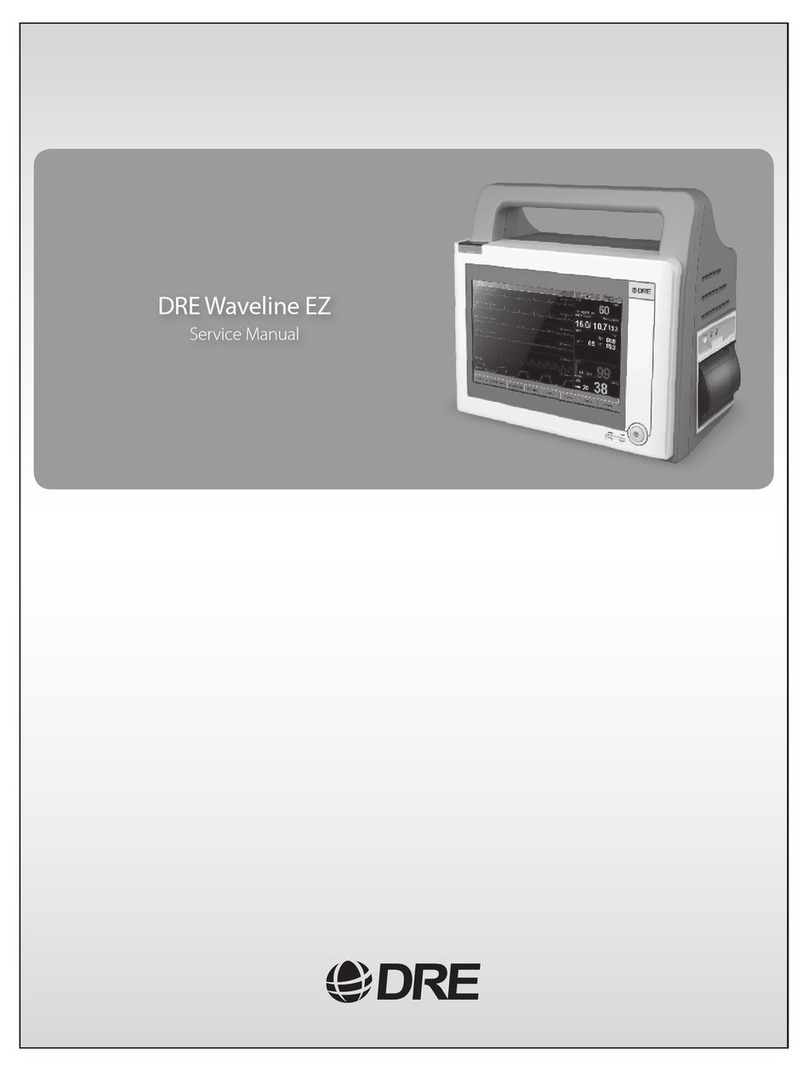
B/0 2-5
Charge time
Operating time
t8 hours
t1.5 hours (full recharge)
Battery Charging Method Automatic charging after monitor is connected to AC power
supply (with charge protection function)
Discharge Protection When powered by battery, the monitor will be automatically
turned off when battery power is almost used up.
3. Performance Specifications
(1) ECG
Patient Safety Standard IEC60601-1-1988
CMRR t60dB (Common Mode Rejection Ratio)
Measure Range 20 ~ 254bpm r1bpm
Heart Rate Averaging 8 second average
ST Segment Range -0.8 ~ + 0.8mV
Interface AAMI 6-pin
Lead Selection I, II, III (3 lead mode)
I, II, III, aVR, aVL, aVF, V (5 lead mode)
Lead Fault Alarm Audible, Visual
Input 5-lead ECG patient cable
QRS Indicator Audible and Visual Alert
Waveform Storage 6 minutes
Sweep Speed 12.5/25/50 mm/sec
Gain Selection 4mV, 2mV, 1mV, 0.5mV, 0.25mV,Auto
Trends 2 hours Æ4 hours Æ8 hours Æ24 hours Æ48
hours
Patient Isolation
Frequency width
Breakdown voltage: 4000VAC 50Hz 60 seconds
Leakage current: <10PA
Monitoring mode: 0.5 ~ 40Hz (+0.4dB,-3.0dB)
Surgery mode: 0.5 ~ 20Hz (+0.4dB, -3.0dB) (not
calibration significant)
Patient Drive Current <10PA
Enclosure Leakage Current <0.1mA
Maximum T wave Rejection Capability 1.2mV
Heart Rate Alarm Response Time < 7 seconds
Aspect Ratio 0.24 ~ 0.6 sec/mV
Defibrillator Protected & ESIS Protected Tested with 5kV
Recovery Time Following Defibrillation <5 seconds
(2) Respiration
Measurement Method Thoracic Impedance
Measurerange 5~99brpm
Accuracy r2 brpm
Refurbish time about 2 seconds
(3) Pulse Oximetry ( SpO2)




























